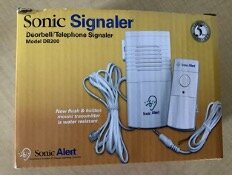Celebrating the Holidays
For many, the holidays are a time of joy and wonder, a time when even adults get in touch with their inner child. For some children who have special needs, though, the same season can also be triggering, confusing and downright intimidating. If you have kids with special needs, you’ve probably experienced this duality, no matter what faith or secular tradition you might identify with.
Fortunately, the holidays are not an either–or proposition. You can enjoy the best aspects of the season in ways that bring joy to everyone—including the ones who experience the excitement through a different lens. The majesty and magic just take a little extra planning. Consider these ways to make the season brighter—in an inclusive way:
Do a little stage-managing. If attending or hosting an event, consider spending a little time reviewing the timeline or sequence in advance with a child who has autism spectrum disorder (ASD) or attention deficit hyperactivity disorder (ADHD). That provides a framework for what will be happening and when. You might even want to give the child a cue or heads-up as your event moves from one segment to another. (“We’ll be sitting down for dinner in a few minutes.”). If the child is jazzed about a particular part of the event (opening presents, singing songs, even going home), a countdown can help.
A tree of their own. Or menorah or other holiday-themed symbol. Some children just want to decorate things their own way, even if it changes from year to year. If a child has trouble accepting decoration-by-committee (i.e., siblings and other family members), consider letting the child do their own thing on a separate, smaller version. A mini-tree or mini-menorah in their room, for example. The child can be as creative as they like. Just be careful to protect against mishaps if flames, ladders and other potential safety hazards are involved.
Design-your-own wrapping paper. Set aside a big roll of craft paper and some washable, quick-dry paint; add a creative child or two and let the magic happen by itself. Give the paper time to dry and—voilà!—custom paper to wrap presents from the child to family members, teachers and anyone else. It’s a great way to promote harmless creative play, self-expression and a sense of accomplishment.
Easy-open presents. For anyone giving presents to a child with special needs, it’s a good idea to think in terms of easy unwrapping. Because complex packaging can be challenging for someone who has deficits with sensory input or motor skills. That’s not to say the presentation can’t be beautiful. But ask people to use less tape, less hard-to-open bubble packaging, and keep window dressing like ribbons, boxes and bows to a minimum. A simple decorative gift bag is an easy option.
Have a Plan B. If the stress of a holiday gathering might be more than a child can manage, bring along some items the child will find comforting. Perhaps a favorite game, snack, toy or clothing item. If it has the power to calm the child down at home, don’t hesitate to deploy it during the holidays.
Manage expectations of family members. Behavior that’s perfectly normal in your immediate family may seem like it’s coming out of left field to someone who is unfamiliar with kids who have special needs. So if you’ll be spending holiday time with someone who doesn’t know the child well (an out-of-town relative, for example), a respectful heads-up helps everyone feel more comfortable. This advice works both ways: If Uncle Bob has behavioral quirks of his own, it may be helpful to let your child know, discreetly, what to expect.
More accessible Santas: If Santa is part of your tradition, a child with special needs might not react the same way as a more mainstream kid. That’s especially true for kids with ASD and ADHD, as well as those with sensory deficits and development issues. In recent years, the Santa industry has evolved, and many shopping and community venues have developed work-arounds that accommodate kids with special needs. Some places have special hours set aside to help you avoid crowds. Some Santas even make house calls. Contact your go-to local Santa venue—a mall, community center or other traditional location—to explore the options in your area.
Sit strategically. For audience-like settings (think religious services, holiday movies, Nutcracker performances), allow for the possibility that your child with special needs might be ready to leave sooner and with less warning than others. So choose seating that lets you experience the spectacle while still facilitating a hasty exit if necessary: on the aisle, near the back.
For Hope Haven services that address the unique needs of children with special needs, contact us at 904-346-5100.

































